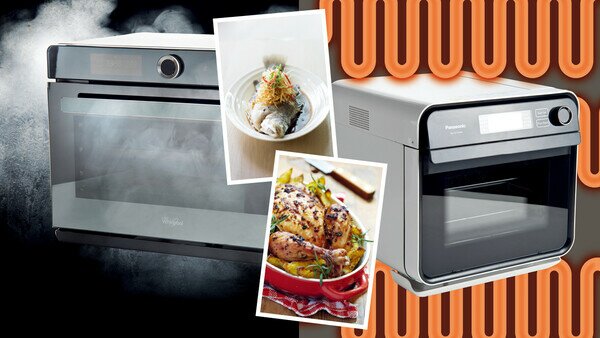Dual-function steam ovens are increasingly popular for a very obvious reason in space-starved Hong Kong household – it offers healthy cooking and space saving. A Consumer Council test has found that in general steam ovens, regardless of price differences, are quite similar in terms of performance and safety. The key criteria in choosing the appliance lies in the temperature control, preheat time and usable capacity.
In collaboration with the Electrical and Mechanical Services Department, the joint test included 8 steam oven models priced from $1,988 to $6,300 with claimed capacity between 15L and 38L. 7 models were designed with individual steam generator, and the remainder 1 with a steam casserole accessory for steaming through the heat of the cooker.
The samples were evaluated for their performance effectiveness, environmental features, safety, limiting of surface temperature, ease of use and accuracy of claims. The test also included a cooking test to compare the colour and taste of the food cooked. The results showed no significant differences in the overall rating of their performance – 3 models scored a high 4.5 points on a 5-point scale, followed closely by the rest 5 scoring a satisfactory 4-point rating.
In the test, the steam ovens were compared for their steam cooking speeds and measured for the time they need to bring the temperature up to 85°C at 5 measurement spots inside a glass container. Significant variations were found among the models in their performance, ranging from 28 to 63 minutes. In respect of baking speeds, 4 samples took only 8.5 minutes to reach the preset temperature, while 1 took more than 30 minutes failing to reach a target temperature set by the international standard, thus scored at 3.5 points. Other than this 1 model the rest of the steam ovens could vary by more than a double in preheating time. Consumers should take note of this in their purchase decision.
The models were also examined whether the product claim in capacity corresponded with that of the actual usable capacity of the steam cooker. All but 1 model was found to have less actual capacity than was claimed by the manufacturers. In 2 models measured with actual capacity of 19.4L and 17.2L respectively and compared with their claim capacity of 26L and 23L, the variances were as much as 25% less. This is due to the heating tubes taking up some of the space inside the oven. Should one need to cook a large amount of food, attention should be paid to ensure the steam oven has sufficient capacity for use.
With no exception, when it comes to steaming vegetable dishes, all vegetables turned a slight colour yellow. Moreover, the heat distribution of 1 model was found to be uneven when baking cupcakes as shown in the very difference in colours between the front and rear parts of the baked pastry. Consumers who are intent on a high cooking standard are advised to choose with a steam oven that is more accurate and even in heat distribution, and take heed of the cooker cavity temperature and the required cooking time.
Steam ovens are high powered electrical appliances in regular use, energy efficiency in electricity consumption is therefore one important factor for consideration. In reference to the international standard, steam ovens and induction cookers were compared for their energy consumption in steaming for 15 minutes. The results revealed that on average, the traditional way of steaming over water by induction cookers required 0.543kWh whereas steam ovens used 0.26kWh, consuming less than half the electricity of the former. Assuming to use steam cooking once a day at an electricity cost of $1.2 per kWh, the annual savings between using steam oven and the traditional steaming method would be close to $124.
In the choice for a steam oven, consumers are advised to pay heed to the following:
- The wattage of steam ovens is relatively high and should not share a power outlet with other appliances;
- Ensure the back and top of the cooker have sufficient room for ventilation, and never operate steam ovens near combustible materials such as curtains, plastic or paper foils;
- Beware of the high temperature of the heating tubes and surface of the inner walls of cavity, and never use abrasive cleaning fluids or tools to clean the glass door of the oven to avoid glass breakage;
- Do not touch the surface while the oven is in use and never allow children to operate or touch it without supervision;
- Clean the removable racks and trays after use, gently wiping the heating tubes and the cavity with a soft cloth; and never use a metal wire brush that could scratch the surface and cause rusting;
- If the steam oven makes unusual noises, smells or overheats, stop using it immediately and arrange inspection by an experienced technician.
The Consumer Council reserves all its right (including copyright) in respect of CHOICE magazine and Online CHOICE.



